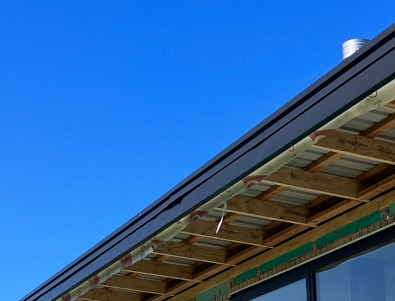Metal Fascias and Facades
Where the vertical planes of metal facings are exposed to sight, they should be designed to allow movement and minimise thermal buckling, and buckling from timber shrinkage. Maximum dimension between folds should be restricted to 300 mm where possible, or swages installed to stiffen the panel. Constructing such flashings from thicker material will also help prevent distortion, but availability of such may be subject to minimum order quantities. Edges should be clip-fastened to allow thermal movement, and lengths over 6 m should be installed with a thermal expansion joint. This can be constructed as an overlap, or a negative detail with sheet ends overlapping an under-soaker, with a gap between the ends of the exposed faces. Typically, this gap would be 5 mm for steel flashings, and 10 mm for aluminium. Parapet Cappings shows an example of a parapet cap expansion detail.
- Log in to post comments

